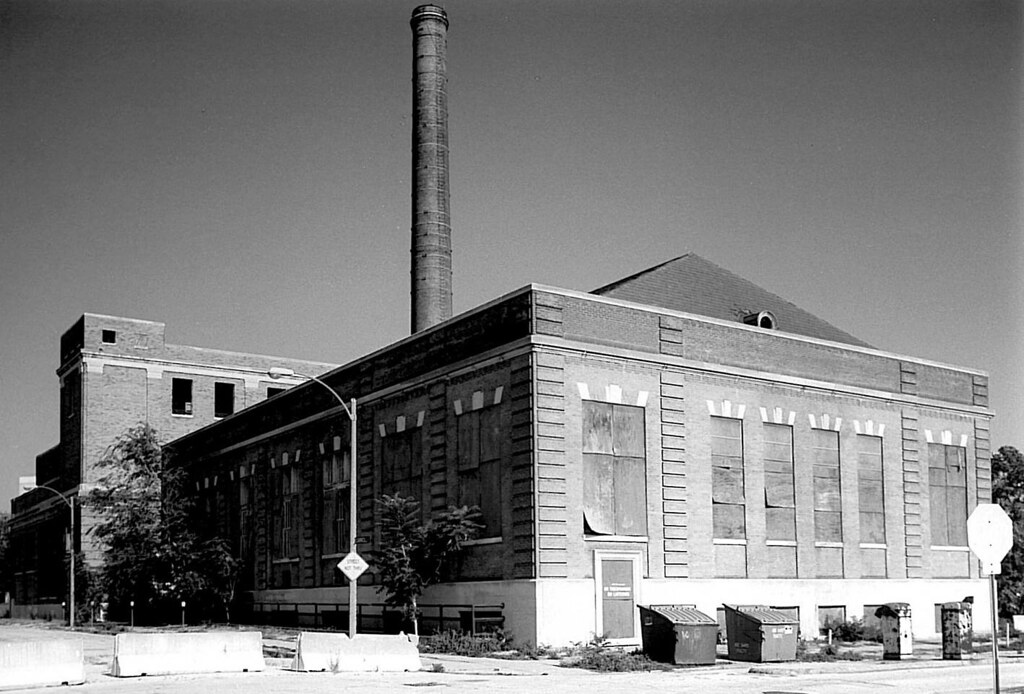
The 50th anniversary gala for Landmarks Association of St. Louis this past weekend took place at a venue called Palladium St. Louis but better known as the Laundry Building at the former City Hospital complex. Since 2003, Gilded Age Development has been working on rehabilitating the remaining buildings of the long-vacant municipal hospital. Thanks to the Butler's Pantry, which built a new building next door for its headquarters, the Laundry Building is now complete.
Landmarks' choice of venue for its half-century birthday was fitting; without an active preservation movement, City Hospital would not have survived nearly twenty years of abandonment to find new investment and new uses. There is another timely coincidence with the re-opening of the Laundry at this time. The National Register of Historic Places nomination for City Hospital by Lynn M. Josse reminds us that the Laundry Building was part of a Depression-era modernization of City Hospital funded by a combination of local and federal funds. Voters approved municipal bond issues in 1933 and 1934 to fund major expansion, and the Federal Emergency Administration of Public Works provided several matching grants. According to Josse, federal funds covered 45% of the costs of the 1939 round of construction that included the Laundry Building as well as a now-demolished 14-story hospital building. Albert Osburg, Chief Architect of the Board of Public Service, probably designed these new buildings.
The following photograph, taken by Dr. George W. Salmon, shows the corner of the newly-completed Laundry Building amid a modernized hospital complex and a dense, if smoky, metropolis.
 Public investment amid economic downtown led to the creation of the Laundry Building in the first place. The rebirth comes in a time when such public investment is viewed through an engrained, misplaced anti-government lense. However, Missouri's state historic tax credit program -- an incentive, of course, rather than a public investment -- returned the Laundry Building to life. In this recession, St. Louis doesn't have the impressive public investment of the New Deal era, but it does have a proven incentive that does a lot of good.
Public investment amid economic downtown led to the creation of the Laundry Building in the first place. The rebirth comes in a time when such public investment is viewed through an engrained, misplaced anti-government lense. However, Missouri's state historic tax credit program -- an incentive, of course, rather than a public investment -- returned the Laundry Building to life. In this recession, St. Louis doesn't have the impressive public investment of the New Deal era, but it does have a proven incentive that does a lot of good.And what good has been done at the Laundry Building! Here's a look at the changes using photographs that I took in 2004 and photographs taken this weekend after the gala.
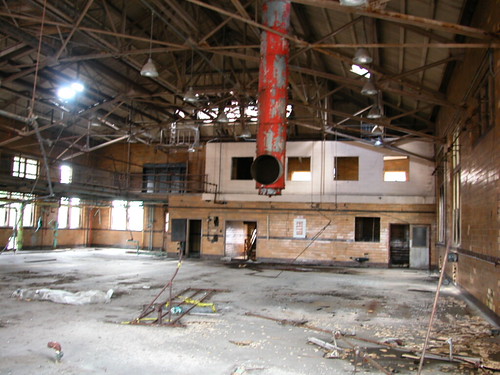
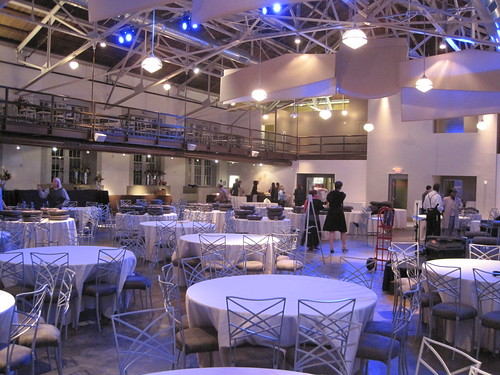 The two views above are looking west inside of the building. The two images below are aimed at the northwest corner. What a change! (The fate of that laundry machine is unknown.)
The two views above are looking west inside of the building. The two images below are aimed at the northwest corner. What a change! (The fate of that laundry machine is unknown.)
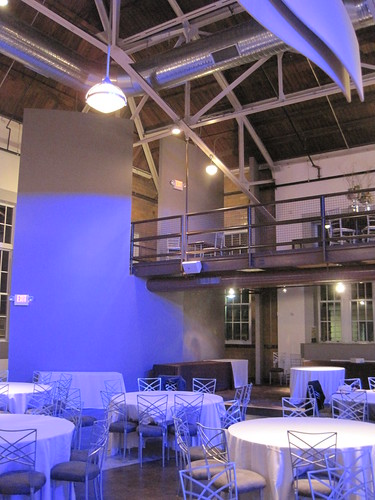 As the photographs above show, the steel balcony running on the south and west walls remains in place. A lot of the glazed structural clay tile has been covered by drywall, but some exposed sections in the corners show off the lovely old walls. Some of those walls needed repair.
As the photographs above show, the steel balcony running on the south and west walls remains in place. A lot of the glazed structural clay tile has been covered by drywall, but some exposed sections in the corners show off the lovely old walls. Some of those walls needed repair.
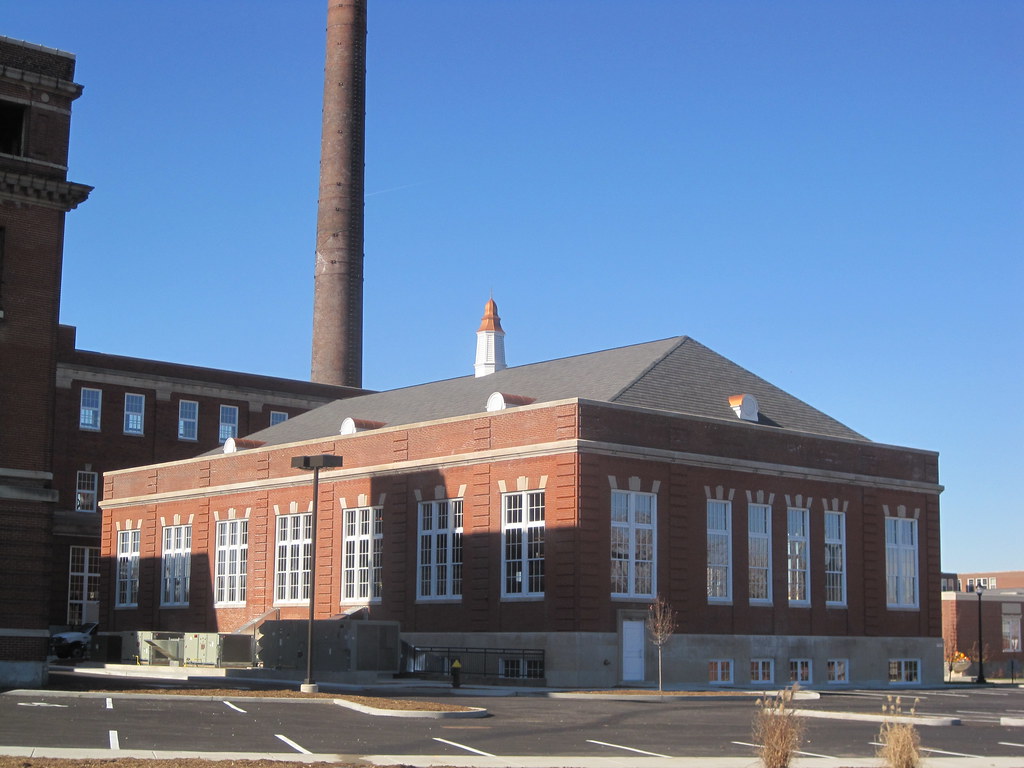 For years, the Laundry Building's windows were boarded with ugly boards painted City-Owned Red. The cupola that echoes the cupolas of the Administration Building and Ward Wings on Lafayette Avenue was destroyed by thieve sin the 1980s. Now, the composition's elegant strength is fully evident. Designed in the Georgian Revival style to blend with the rest of the historic hospital complex, the Laundry Building is really a functional modern box. Yet its architect gave this utilitarian building the dignity and hopeful beauty demanded by a city hospital building built amid a major national public works effort.
For years, the Laundry Building's windows were boarded with ugly boards painted City-Owned Red. The cupola that echoes the cupolas of the Administration Building and Ward Wings on Lafayette Avenue was destroyed by thieve sin the 1980s. Now, the composition's elegant strength is fully evident. Designed in the Georgian Revival style to blend with the rest of the historic hospital complex, the Laundry Building is really a functional modern box. Yet its architect gave this utilitarian building the dignity and hopeful beauty demanded by a city hospital building built amid a major national public works effort.





6 comments:
Is that cupola too small? It doesn't look right proportionally.
what do you call that type of roof?
wow!
I believe that is called a hip roof. But don't quote me on that.
What an incredible transformation. Very gratifying to see new life in an old building.
Simply fantastic.
Post a Comment